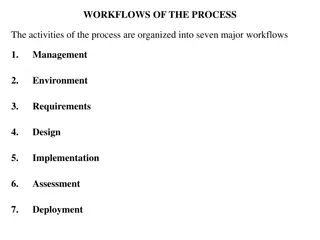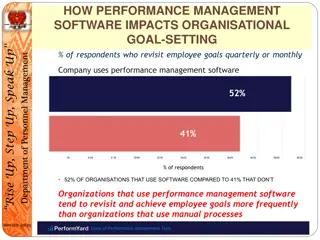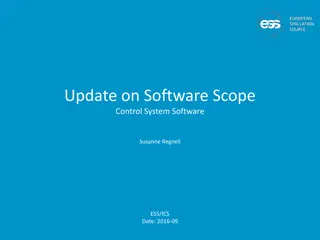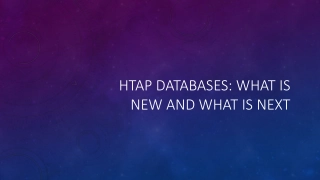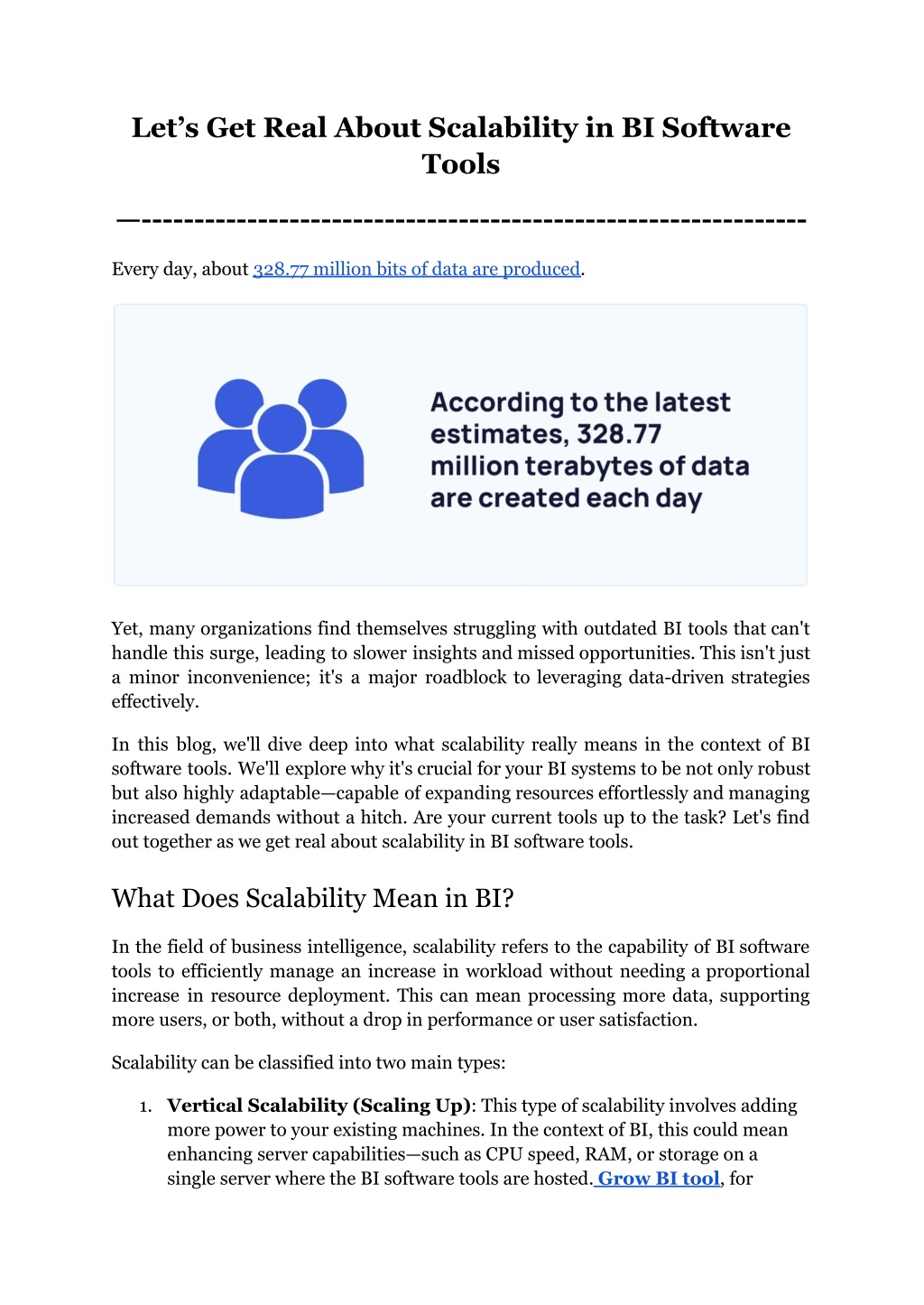
Let’s Get Real About Scalability in BI Software Tools
Join us as we get real about the benefits and challenges of scaling your BI tools and learn practical strategies to ensure your data analytics capabilities are as expansive as your ambitions.
Download Presentation
Please find below an Image/Link to download the presentation.
The content on the website is provided AS IS for your information and personal use only. It may not be sold, licensed, or shared on other websites without obtaining consent from the author. Download presentation by click this link. If you encounter any issues during the download, it is possible that the publisher has removed the file from their server.
Presentation Transcript
Lets Get Real About Scalability in BI Software Tools --------------------------------------------------------------- Every day, about 328.77 million bits of data are produced. Yet, many organizations find themselves struggling with outdated BI tools that can't handle this surge, leading to slower insights and missed opportunities. This isn't just a minor inconvenience; it's a major roadblock to leveraging data-driven strategies effectively. In this blog, we'll dive deep into what scalability really means in the context of BI software tools. We'll explore why it's crucial for your BI systems to be not only robust but also highly adaptable capable of expanding resources effortlessly and managing increased demands without a hitch. Are your current tools up to the task? Let's find out together as we get real about scalability in BI software tools. What Does Scalability Mean in BI? In the field of business intelligence, scalability refers to the capability of BI software tools to efficiently manage an increase in workload without needing a proportional increase in resource deployment. This can mean processing more data, supporting more users, or both, without a drop in performance or user satisfaction. Scalability can be classified into two main types: 1. Vertical Scalability (Scaling Up): This type of scalability involves adding more power to your existing machines. In the context of BI, this could mean enhancing server capabilities such as CPU speed, RAM, or storage on a single server where the BI software tools are hosted. Grow BI tool, for
instance, leverages powerful servers that can be scaled up to meet increasing data demands, ensuring that performance remains optimal. 2. Horizontal Scalability (Scaling Out): Unlike vertical scalability, horizontal scalability addresses the need for growth by adding more machines to your infrastructure. This approach is particularly relevant in distributed computing environments where BI software tools like Grow BI software can distribute processing tasks across multiple servers, enhancing performance and fault tolerance. Also, read Grow x Unlimited: Users, Dashboards, Datasets, Metrics Challenges to Achieving Scalability in BI Software Tools Achieving scalability in BI is not without its challenges. Key among them are: Hardware Limitations: As data volumes grow, the physical limitations of existing hardware can be a bottleneck. This is often a challenge with vertical scalability where the scope for upgrading a single system is limited. Software Architecture Constraints: Not all BI reporting software is designed to scale seamlessly. Architectural constraints can hinder the efficient distribution of tasks, particularly in older systems that were not designed with scalability in mind. Data Integration and Synchronization: In a scalable BI environment, especially one that relies on horizontal scalability, data must be synchronized across multiple systems. This requires robust integration tools and protocols to ensure data consistency and reliability. Cost Implications: Scaling BI systems, especially on-premises solutions, can be costly. Investments might be needed not only in hardware but also in licensing fees for scaling out BI software tools. Key Features of Scalable BI Software Scalability in BI software tools is critical for businesses aiming to grow efficiently while maintaining the integrity and speed of their data analytics. Cloud-Based Solutions Beyond 90% of businesses use the cloud. One of the most significant advancements in scalable BI software tools is the adoption of cloud-based solutions. Cloud platforms offer BI tools the flexibility to scale resources dynamically, which is essential for handling varying data loads and user numbers. 2
For example, Grow BI software leverages cloud capabilities to provide on-demand data processing power and storage, which can be scaled up or down based on the organization's needs. Moving your business to the public cloud can cut your Total Cost of Ownership (TCO) by up to 40%. This cost efficiency, combined with the ability to scale quickly, makes cloud-based BI tools like Grow BI software highly attractive. Elasticity Elasticity refers to the ability of a system to automatically adjust its resource capacity directly in response to workload changes without human intervention. This is crucial for maintaining performance levels during unexpected demand spikes. For instance, during peak business periods like Black Friday, BI reporting software that is elastic can automatically allocate more resources to handle the increase in data queries and user access, making sure that the system remains stable and responsive. Load Balancing Load balancing is a technique used to spread work evenly across multiple servers or resources. In the context of BI software tools, it ensures that no single server becomes a bottleneck, which can degrade performance and user experience. There are different ways to balance the load, such as round-robin, least connections, and IP hash. By effectively distributing requests, BI tools like the Grow BI tool ensure that data processing is done efficiently, reducing wait times and improving user satisfaction. High Availability and Disaster Recovery Statistics indicate that enterprises with robust disaster recovery plans can reduce potential downtime costs by up to 55% compared to those without such measures. 3
High availability refers to a system's ability to remain operational with minimal downtime, even during high loads or when parts of the system fail. Disaster recovery, on the other hand, focuses on quickly restoring operations after a system failure. Businesses using BI software tools with built-in high availability and disaster recovery features can maintain continuity even in adverse conditions. Data Integration and Real-Time Processing Efficient data integration capabilities ensure that BI software tools can handle data from various sources without lags or errors, which is vital for real-time data processing and analytics. Real-time processing allows businesses to make quick, informed decisions based on the latest data. For example, Real-time processing allows businesses like Altaworx to make quick, informed decisions. By integrating data seamlessly across different sources and making it accessible across the organization, Grow BI software tools empower companies to optimize their strategies based on actionable insights. Conclusion As we've explored throughout this discussion on scalability in BI software tools, it's clear that the ability to scale effectively is not just a technical requirement but a strategic imperative for companies that want to do well in a data-driven world. Scalability ensures that as your business grows, your data handling capabilities grow alongside it, without sacrificing performance, reliability, or user experience. 4
Grow BI software stands out as a robust solution in this regard, offering not only the scalability needed to handle increasing demands but also the flexibility and efficiency that modern businesses require. Whether it's through enhanced data integration, real-time processing, or cloud-based scalability, Grow provides a comprehensive toolkit that can adapt to your changing needs. To truly understand how Grow BI software can transform your approach to data analytics and decision-making, we encourage you to take advantage of the 14-day free trial. Experience firsthand how Grow's scalable solutions can support your business growth and help you make more informed decisions faster. For those interested in detailed pricing options and to see how Grow stacks up against other tools in the market, check out the latest Grow Pricing 2024 on Capterra. Here, you can find in-depth reviews and comparisons to help you make the best choice for your business needs. Embrace the scalability that Grow offers and take your business intelligence capabilities to the next level. Don't just grow; thrive with Grow BI software, where your data's potential is limitless. 5








